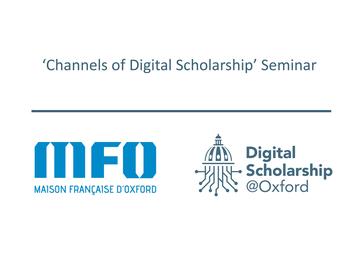'Channels of Digital Scholarship' Seminar
Similar events
'Deep Fake'

To attend this event on Zoom, please register here.
'Deep Fake and Shallow Fun: A Semiotic Hypothesis'
Massimo Leone (University of Turin; Bruno Kessler Foundation, Trento; Shanghai University; University of Cambridge)
There is no doubt that there is a component of amusement in the production, circulation, and enjoyment of deepfakes, a relatively new genre of contemporary digital communication. This component, which can be articulated and named according to the different facets of amusement, from hilarity to mockery, from teasing to the grotesque, is not only found in individual and subjective psychological reactions (and, hence, detectable only through both qualitative and quantitative socio-semiotic tools), but also in the textual traces that deepfakes determine at the time of their reception: comments, reactions, and reformulations seem to express wonder and laughter, rather than disquiet and dismay. The emotional tone with which deepfakes are received certainly depends on their content, and particularly on the public figure whose video representation created through artificial intelligence is circulated. It is one thing, for example, to watch one of the countless Tom Cruise deepfakes collected by a dedicated TikTok channel; it is quite another to watch a doctored video of a sitting prime minister. Both videos function textually in the same way: they exercise visual make believe through extreme iconic verisimilitude; their extra-textual referent, however, or, rather, their anchoring in the discursiveness of the culture in which they circulate, is different: of Tom Cruise we know that he is an actor whose profession is to pretend, whereas of Obama we expect him, at least ideally, to embody his role with veracity; that videos circulate of Tom Cruise depicted performing actions he never did or would perform only adds a new possibility to his interpretive range; seeing Obama deliver strange speeches, on the other hand, raises doubts about the reliability of his video and digital appearances. And yet, even in the latter case, that is, even in the case of politically motivated deepfakes, an entertainment component is always present. The truth is, if we realize that we are faced with a deepfake, we dissolve it from the point of view of the epistemic tightness of its textuality. The real deepfakes are those that produce social and pragmatic effects in the interaction between the character they represent and its audience. It is one thing to laugh at Obama delivering a Nazi speech in a video; it is quite another to stop (or, worse, start) voting for Obama because one believes he delivered a Nazi speech in a video. The former is a kind of modern version of the trompe-l'oeil, an ambiguous artifact that produces amusement at the limina between reality and fiction; the latter is a digital visual lie good and proper, whose purpose is no longer to amuse through the revelation of a believable fake, but to deceive through the concealment of an invisible fake. The paper will focus on this complex relationship between amusement and falsehood, exploring the more general hypothesis that fun actually is, in contemporary digital communication, the Trojan horse of falsehood in the construction of public opinion.
'The model that matters: Encoding the likeness as a social practice'
Bernie Hogan (Oxford Internet Institute, University of Oxford)
In the semiotic tradition, encoding refers to the manner in which a sign is communicated or transmitted using the signifier to indicate the signified. The written name is a signifier that efficiently and obviously encodes personhood. We regularly and profusely use names to signify other people. Names form a part of our self-identity as well as a means for governing through bureaucracy. The likeness has heretofore been an understood aspect of one’s self-identity but rarely has it been governed among everyday people. This is changing as the likeness is becoming encodable.
Software such as Dreambooth enable a user to generate a reasonably impressive model of a person with a few dozen well chosen photos. These models are extensions of existing generalised models of all sorts of imagery that now can invoke that person in the generation of an image. The images will then contain a recognisable likeness of the person.
This presentation discusses the newfound potential of encoding the likeness drawing on parallels with the name as means of self-identification. I draw particularly on onomastics, anthropological work on naming conventions, and the philosophy of proper names, particularly via Searle and Kripke. I conclude that we need to introduce the notion of a proper likeness on par philosophically with Kripke’s proper name. If the likeness can be stored and governed like a name, it should have similar status, legally, and philosophically.
This session is convened by Grégoire Lacaze (MFO/Aix Marseille)
The ‘Channels of Digital Scholarship’ Seminar is convened by Tristan Alonge (Université de la Réunion & MFO), Andrew Cusworth (Digital Scholarship, Oxford), Olivier Delouis (MFO), Goran Gaber (EHESS, LIER-FYT), Grégoire Lacaze (MFO/Aix Marseille), and Pascal Marty (MFO)



